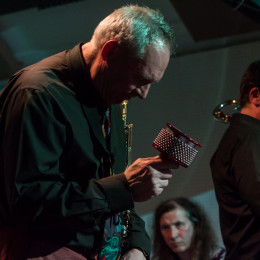Interplay back at Symphony Hall

Interplay has been booked to play at Birmingham’s prestigious Symphony Hall in the popular Jazzlines series of Friday foyer concerts. This marks our return after a gap of some four years.
This has prompted me to reflect on how the jazz scene in the city has evolved in recent times. The return of the Town Hall to major jazz events, and continuation of excellent programmes at places like the CBSO Centre, have set a high bar at their level, while exciting developments such as the jazz promotions at the Hare and Hounds and Spotted Dog have added something more ‘street’. The growing presence and impact of the jazz course at the Conservatoire, also, stimulates a lively self-help scene among young and emerging musicians.. Creatively things are really buzzing.
Is there a down side? Well, the lack of a really coordinated approach to jazz promotion in the city and the region could be one. Compared to other parts of the country we don’t seem to have the ability to pool energies or resources the way some of our neighbouring regions appear to do. The ‘jazz community’ here thus provides a somewhat fractured and polarised environment in which to work, and this is not helpful at any level.
The absence of a recognised broadcast platform for the music might be another. With notable important exceptions such as internet radio The Bridge’s Alan Musson or Theresa Kellegher at Seclow Sounds we are hardly overwhelmed by broadcasters thirsting to share our music or experiences.
Outside the city itself the jazz picture is also mixed, but certainly not disheartening. Warwick Arts Centre still offers a varied programme although Jazz Coventry is but a shadow of its former self and Stratford Jazz has, understandably, scaled back its activities.
At more local level Leam Jazz is still hanging in there after three years of unsubsidised promotions and only this week the new Kenilworth Jazz Club got off to a flying start, while Spa Jazz at The Clarendon is going from strength to strength. There are no shortages of players or listeners at jazz jam sessions either – Rugby now has two – and there seems to be a steady flow of people wanting to learn to play jazz, of all ages and stages. Much of this activity of course comes as a result of dedicated voluntary effort.
So it’s clear that jazz in this region is not ‘dead’, that it has creative energy, that a lot of people are interested in getting further into it as players and as audiences. While small scale compared to mainstream popular culture it comprises a vital field of live activity and engagement for people of all kinds on many different levels, so adding immeasurably to the cultural health of our communities. This is no small achievement and should, in my opinion, be more widely celebrated.



